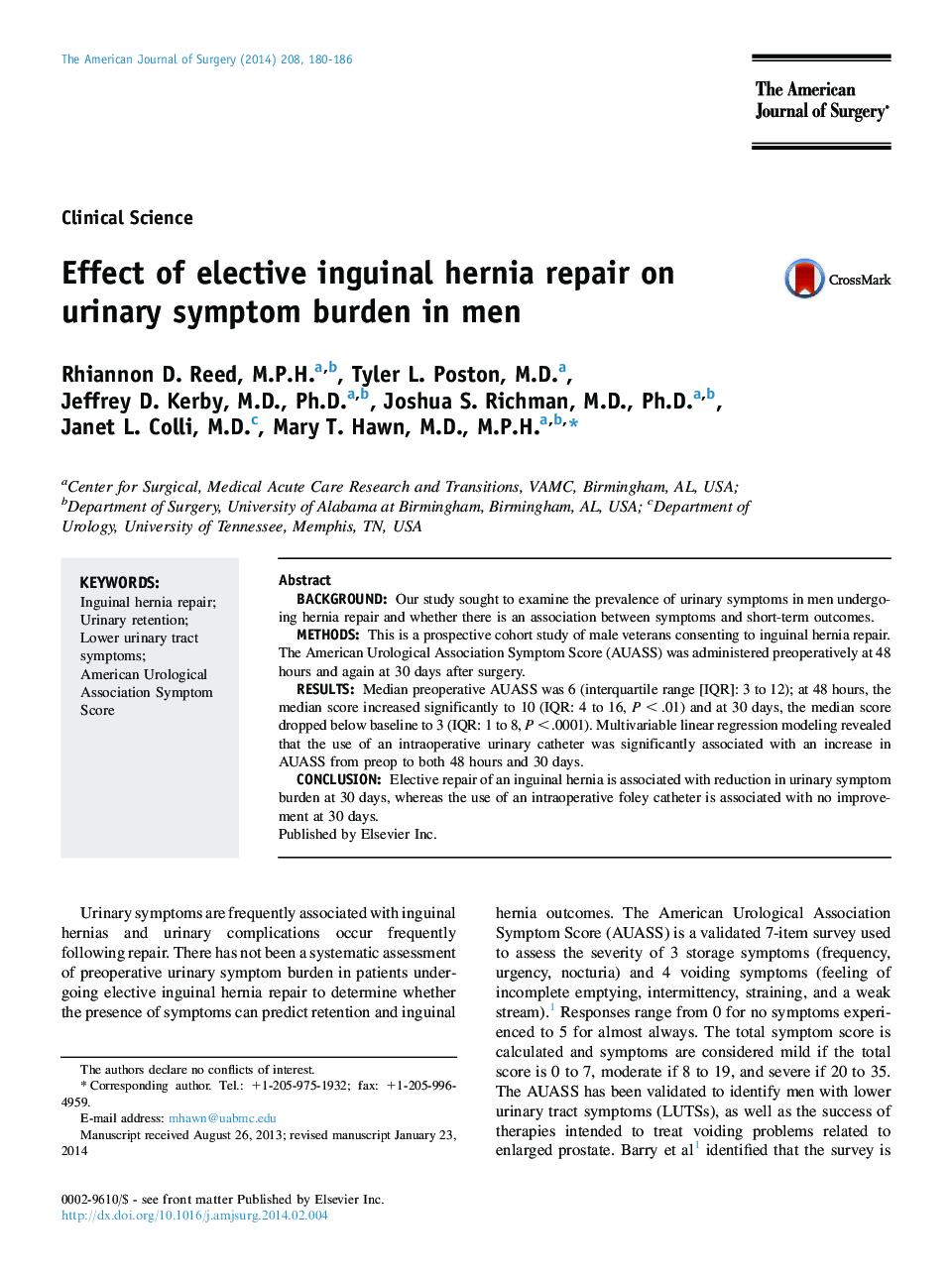| Article ID | Journal | Published Year | Pages | File Type |
|---|---|---|---|---|
| 4278563 | The American Journal of Surgery | 2014 | 7 Pages |
BackgroundOur study sought to examine the prevalence of urinary symptoms in men undergoing hernia repair and whether there is an association between symptoms and short-term outcomes.MethodsThis is a prospective cohort study of male veterans consenting to inguinal hernia repair. The American Urological Association Symptom Score (AUASS) was administered preoperatively at 48 hours and again at 30 days after surgery.ResultsMedian preoperative AUASS was 6 (interquartile range [IQR]: 3 to 12); at 48 hours, the median score increased significantly to 10 (IQR: 4 to 16, P < .01) and at 30 days, the median score dropped below baseline to 3 (IQR: 1 to 8, P < .0001). Multivariable linear regression modeling revealed that the use of an intraoperative urinary catheter was significantly associated with an increase in AUASS from preop to both 48 hours and 30 days.ConclusionElective repair of an inguinal hernia is associated with reduction in urinary symptom burden at 30 days, whereas the use of an intraoperative foley catheter is associated with no improvement at 30 days.
